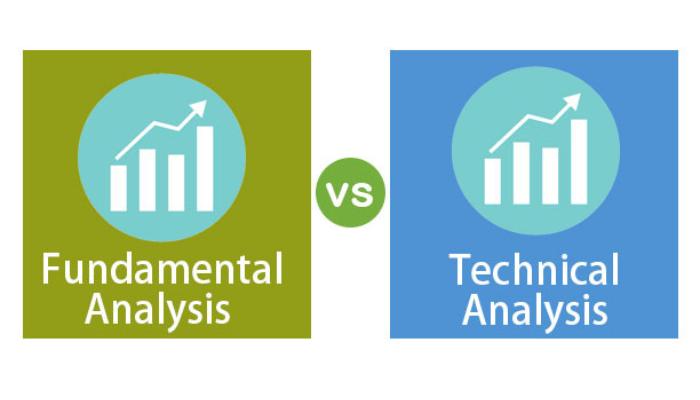Understand Technical Analysis vs Fundamental Analysis
In the realm of investing, two prominent methodologies vie for attention: technical analysis and fundamental analysis. Each offers distinct perspectives on market dynamics, catering to different investment styles and objectives.
Advertising
In this article, we’ll delve into the nuances of these approaches, shedding light on their unique characteristics and how they influence investment decisions. By gaining insight into both methods, investors can better navigate the complexities of the financial landscape and develop strategies aligned with their goals.
Understanding Technical Analysis
Advertising
Technical analysis is an investment approach based on studying charts and price patterns to predict future market movements.
Proponents of technical analysis believe that past price behavior can provide insights into future market behavior. Here are some basic principles of technical analysis:
Advertising
- Price Charts: Technical analysts use price charts to identify market trends and patterns, such as supports, resistances, uptrends, downtrends, and reversal patterns.
- Technical Indicators: In addition to price charts, technical analysts also use a variety of technical indicators, such as moving averages, MACD (Moving Average Convergence Divergence), and RSI (Relative Strength Index), to help identify entry and exit points in the market.
- Volume Analysis: Technical analysis also takes into account the trading volume of an asset, as volume can indicate investor interest and the strength of a market trend.
Pros and Cons of Technical Analysis

Technical analysis offers a dynamic approach to investment, based on the interpretation of price charts and technical indicators.
While it is a valuable tool for many investors, it has its own pros and cons to consider.
- Pros:
- Technical analysis is relatively simple to understand and apply, making it accessible for novice investors.
- Technical analysts can identify short-term opportunities and react quickly to market changes.
- Technical analysis is especially useful in volatile markets, where price patterns may repeat more frequently.
- Cons:
- Technical analysis does not take into account the underlying fundamentals of a company or asset, which can lead to investment decisions based solely on historical data.
- Signals generated by technical analysis are not always accurate and can lead to financial losses if not interpreted correctly.
- Technical analysis can be subjective, with different analysts interpreting the same data differently.
Understanding Fundamental Analysis
Unlike technical analysis, fundamental analysis focuses on the financial fundamentals of a company or asset to determine its intrinsic value.
Fundamental analysts believe that the market price of an asset will eventually align with its real value, based on factors such as earnings, revenues, cash flow, balance sheet, and growth prospects. Here are some basic principles of fundamental analysis:
- Financial Statements: Fundamental analysts analyze a company’s financial statements, including the balance sheet, income statement, and cash flow statement, to assess its financial health and operational performance.
- Financial Ratios: They also calculate and evaluate a variety of financial ratios, such as P/E (Price-to-Earnings), P/B (Price-to-Book), ROE (Return on Equity), and ROA (Return on Assets), to determine the relative value of a company compared to its market price.
- Qualitative Analysis: In addition to financial data, fundamental analysts consider qualitative factors, such as management quality, industry competitiveness, macroeconomic trends, and regulatory risks, when assessing a company’s growth potential.
Pros and Cons of Fundamental Analysis
Fundamental analysis is an investment approach that provides a comprehensive understanding of a company’s financial health and long-term growth potential.
While it is widely used by long-term investors, it presents both advantages and challenges.
- Pros:
- Fundamental analysis provides a comprehensive understanding of a company’s financial health and long-term growth potential.
- Fundamental analysts can identify undervalued investment opportunities based on in-depth analysis of a company’s fundamentals.
- Fundamental analysis is especially useful for long-term investors seeking to build wealth over time.
- Cons:
- Fundamental analysis can be complex and time-consuming, requiring a detailed understanding of financial statements and accounting concepts.
- The results of fundamental analysis do not always materialize immediately, requiring patience on the part of the investor.
- Fundamental analysis can be affected by unforeseen events and changes in the business environment that may not be reflected in financial data.
Which is the Best Approach for Investing?
So, which is the best approach for investing: technical analysis or fundamental analysis?
The truth is that there is no definitive answer, and the best approach may vary depending on your investment style, financial goals, and risk tolerance.
Some investors prefer to combine elements of both approaches, while others focus exclusively on one.
To help you decide which approach is most suitable for you, here are some questions to consider:
- Do you prefer short-term or long-term investing?
- Are you comfortable conducting detailed analyses of financial statements and fundamental data?
- Do you have the time and resources to closely monitor market movements and identify short-term opportunities?
By answering these questions and evaluating your own investment goals and preferences, you can make an informed decision about which approach is most suitable for you.
Remember to always diversify your investments and conduct thorough research before making any investment decisions.
Technical analysis and fundamental analysis are two different approaches to investing in the financial market, each with its own merits and challenges.
While technical analysis focuses on price patterns and technical indicators to predict short-term market movements, fundamental analysis examines the financial fundamentals of a company to determine its long-term value.
Whatever your choice, always remember to stay updated on the latest market trends and developments and to adjust your investment strategy as needed to achieve your long-term goals.





